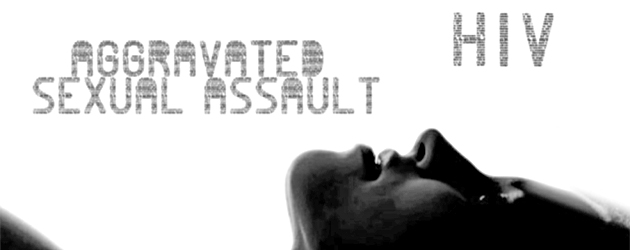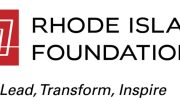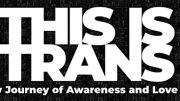Plus, impact of domestic violence on LGBT and HIV-positive people.
By: Eric Brus*
The U.S. Centers for Disease Control recently published a new report, Diagnoses and Prevalence of HIV Infection Among Hispanics or Latinos–United States, 2008-2013, focused on the impact of HIV on Hispanic and Latino people. CDC noted that while Hispanics/Latinos represent about 17% of the U.S. population, they continue to be disproportionately affected by HIV infection. Of the approximately 912,000 persons living with diagnosed HIV infection in the U.S. at the end of 2012, 183,300 (20%) were Hispanics/Latinos. In addition, Hispanics/Latinos accounted for about 21% of the approximately 276,600 new HIV diagnoses among adults and adolescents during the period from 2008 through 2013.
The researchers found that, while the overall rates of new diagnoses among Hispanics/Latinos decreased about 14% during the period―from 28.3 per 100,000 in 2008 to 24.3 per 100,000 in 2013―the number and proportion of new diagnoses attributed to male-to-male sexual contact substantially increased. Between 2008 and 2013, the estimated number of new diagnoses in this risk category rose about 16% from 6,141 to 7,098, while the percentage of total new diagnoses attributed to male-to-male sex increased from 62.7% to 71.4%. [pullquote]“The disproportionate rate of HIV infection among Hispanics or Latinos and the disparities found within this population indicate that much work still needs to be done to reach Hispanics or Latinos at high risk for acquiring or transmitting HIV infection,” the researchers concluded.[/pullquote]
A large proportion (43%) of Hispanics/Latinos who received an HIV diagnosis during the period were not born in the U.S. or the U.S. territory Puerto Rico. The CDC researchers noted that, “The large proportion of HIV diagnoses in the United States among Hispanics or Latinos who are immigrants is important to consider when developing HIV prevention interventions, given that approximately 40% of Hispanic or Latino immigrants do not speak English well or at all and because certain socioeconomic factors, such as limited access to health care, lack of health insurance, and poverty, might be at play.”
“The disproportionate rate of HIV infection among Hispanics or Latinos and the disparities found within this population indicate that much work still needs to be done to reach Hispanics or Latinos at high risk for acquiring or transmitting HIV infection,” the researchers concluded. “CDC and its partners are pursuing a high-impact prevention approach to maximize the effectiveness of current HIV prevention methods.”
New LCOA Brief: In related news, the Latino Commission on AIDS (LCOA) has produced a four-page brief, The State of HIV & AIDS Among Hispanics/Latinos in the United States and Puerto Rico. The brief, which is also available in Spanish, summarizes recent CDC data and the challenges of addressing HIV/AIDS among Latinos/Hispanics, including the role of institutional stigma and barriers to community engagement. “We hope to contribute to a better understanding of the complex challenges we face as community members, and the urgent need to develop comprehensive and culturally responsive strategies to address HIV, access to quality healthcare, and other health conditions disproportionately impacting our community,” stated Guillermo Chacón, LCOA president and founder of the Hispanic Health Network.
Spanish-Language Version of the Updated National HIV/AIDS Strategy: On NLAAD, the U.S. White House released Estrategia Nacional contra el VIH / SIDA: Actualizado Hasta 2020―a Spanish-language version of the National HIV/AIDS Strategy: Updated to 2020, which was released in July. The publication of the updated Strategy in Spanish is part of an ongoing effort to raise HIV/AIDS awareness and engage Hispanic/Latino communities in the Obama Administration’s work towards an AIDS-free generation. [pullquote]The brief, which is also available in Spanish, summarizes recent CDC data and the challenges of addressing HIV/AIDS among Latinos/Hispanics, including the role of institutional stigma and barriers to community engagement.[/pullquote]
Focus on Intimate Partner Violence and HIV
New Public Awareness Campaign: One in three women in the U.S. experiences intimate partner violence (IPV), and for women living with HIV, the figure is one in two. Research has shown that persons with abusive partners have a higher risk for HIV and, if infected, have worse health outcomes. On October 20, during National Domestic Violence Awareness Month, Greater Than AIDS launched Empowered: Women, HIV, and Intimate Partner Violence – to bring greater attention to IPV and to provide resources for women who may be at risk of, or dealing with, abuse and HIV. The Empowered campaign was developed in partnership with the National Domestic Violence Hotline, loveisrespect, Planned Parenthood Federation of America, Positive Women’s Network-USA, and The Well Project, with additional support from The Elizabeth Taylor AIDS Foundation. Empowered has created a 20-minute video featuring women’s health advocate Tonya Lewis Lee, who explores the issue from the perspective of five women living with HIV who have had experience with, and received services related to, intimate partner violence.
Impact of IPV on Women’s Engagement in HIV Care: The journal AIDS recently featured an in-depth review and meta-analysis of the impact of IPV on engagement in HIV care and treatment among women. The study found that HIV-infected women with a history of physical or sexual IPV were significantly less likely to be on antiretroviral treatment (ART) than women who had never been subjected to IPV. Among those receiving ART, IPV-affected women had much lower rates of ART adherence and were significantly less likely to reach viral suppression than women without an IPV history. “To ensure the health of HIV-positive women, it is essential for clinical programs to address conditions that impact engagement in care and treatment,” the researchers concluded. “IPV is one such condition, and its association with declines in ART use and adherence requires urgent attention.”
New Report on IPV Among LGBTQ and HIV-Affected Persons: The National Coalition of Anti-Violence Programs (NCAVP) released the 2014 NCAVP Intimate Partner Violence Report on October 27. This report presents the findings of data collected from 16 NCAVP member organizations on the experiences of 2,166 lesbian, gay, bisexual, transgender, queer (LGBTQ), and HIV-affected survivors of intimate partner violence (IPV) during 2014. Key findings and trends include the following:
- Continuing a multi-year trend, the group most impacted by IPV homicide was men who have sex with men.
- Bisexual survivors were more likely to experience sexual violence than those who did not identify as bisexual.
- LGBTQ and HIV-affected people of color were disproportionately affected by IPV and experienced more severe forms of violence. An association between poverty and higher IPV rates was also seen among LGBTQ people of color.
- Transgender people were twice as likely to experience IPV in public areas and more than three times as likely to experience discrimination compared to people who did not identify as transgender.
NCAVP concluded that, “These findings demonstrate the importance of an intersectional approach that looks at the impact that poverty and racism, as well as homophobia, biphobia, and transphobia, have on the lives of LGBTQ people and HIV- affected [persons] of color.” [pullquote]LGBTQ and HIV-affected people of color were disproportionately affected by IPV and experienced more severe forms of violence. An association between poverty and higher IPV rates was also seen among LGBTQ people of color.[/pullquote]
FDA Approves Genvoya―A New Once-Daily HIV Regimen
On November 5, the U.S. Food and Drug Administration (FDA) announced the approval of a new one-pill-a-day HIV treatment regimen called Genvoya, made by Gilead Sciences. Genvoya is a tablet containing four drugs: elvitegravir, cobicistat, emtricitabine, and tenofovir alafenamide. The recommended dosage of Genvoya is one tablet taken once daily with food.
Genvoya is the first approved anti-HIV pill to contain a new form of the drug tenofovir called tenofovir alafenamide, or TAF for short. The older form of tenofovir―called tenofovir disoproxil fumarate or TDF―was approved by the FDA in 2001. TDF is a component in most current HIV treatment regimens, as well as in the only FDA-approved pill to prevent HIV transmission (Truvada).
The new form of tenofovir (TAF) provides lower levels of drug in the bloodstream, but higher levels within the cells, where the HIV virus replicates. It was developed to help reduce drug side effects―including decreased bone density and kidney toxicity―sometimes seen in persons taking the older form of tenofovir (TDF). The hope is that the substitution of TAF for TDF will significantly reduce the risk of side effects and long-term toxicities.
Genvoya is very similar to another Gilead once-daily tablet called Stribild, which was approved in 2012. Both tablets contain the drugs elvitegravir, cobicistat, and emtricitabine, but in Genvoya the TAF form of tenofovir is substituted for the TDF form contained in Stribild. The wholesale acquisition cost of Genvoya is expected to be the same as for Stribild―about $31,400 per year. “Our request to Gilead that Genvoya be priced neutrally with Stribild was heard,” noted Lynda Dee, co-chair of the Fair Pricing Coalition, a group that negotiates pricing with drug-makers. “We now need to ensure that this welcome addition is priced affordably for all cash-strapped public insurance programs and that future TAF-inclusive co-formulations are priced to ensure access for all people living with HIV.” [pullquote]A new documentary film, “Consent: HIV Non-Disclosure and Sexual Assault Law,” looks at the effects of using Canada’s sexual assault law to prosecute persons living with HIV who do not disclose their HIV status to sexual partners. [/pullquote]
It is worth noting that Gilead has also filed for FDA approval of a new version of the two-drug combination pill Truvada, in which TAF will be substituted for TDF. If approved, as expected, the tablet will receive a new name and may be used in place of Truvada for HIV treatment and prevention.
Canadian Film Explores Criminalization of HIV Non-Disclosure
A new documentary film, “Consent: HIV Non-Disclosure and Sexual Assault Law,” looks at the effects of using Canada’s sexual assault law to prosecute persons living with HIV who do not disclose their HIV status to sexual partners. The Canadian HIV/AIDS Legal Network and Goldelox Productions produced the film after the Legal Network convened a group of feminist scholars, front-line workers, activists, and legal experts to discuss the issue of criminalizing HIV non-disclosure. According to the film-makers, through the testimony of these experts, “Consent shines a light on the systemic obstacles women face in disclosing their HIV status, points to the dangerous health and human rights outcomes of applying such a harsh charge as aggravated sexual assault to HIV non-disclosure, and makes the argument that the law needs to better protect those who are living with and vulnerable to HIV.” The 27-minute film may be viewed online for free. The Legal Network is also producing a discussion guide that it expects will be available on the film’s website in the near future.
Eric Brus is the Director of Health Information at AIDS Action Committee. This report is produced by the Health Library of the AIDS Action Committee in collaboration with the New England AIDS Education and Training Center Minority AIDS Initiative Project. The full version is available online.








